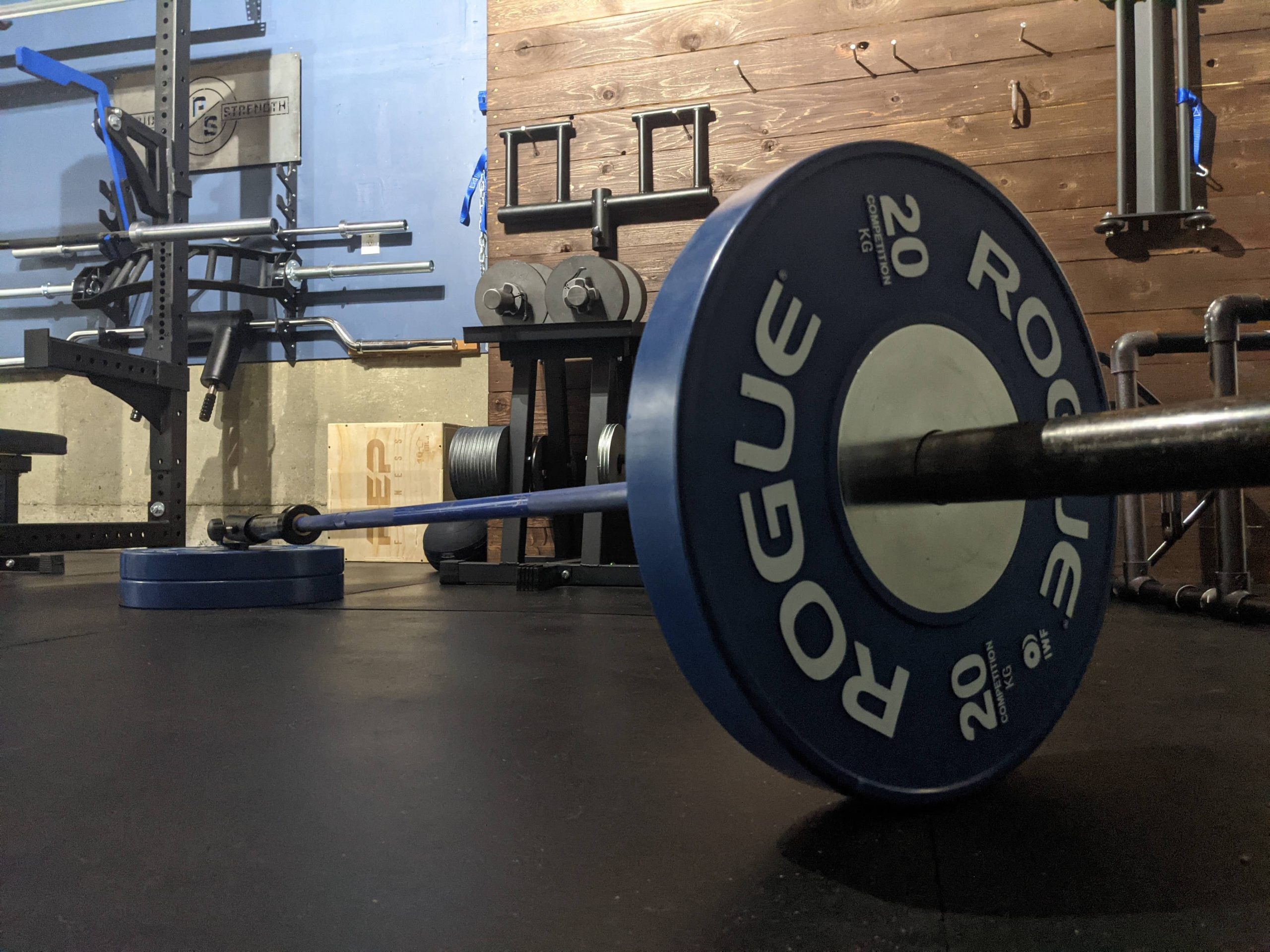With the home gym being my new primary workout location, I’m getting more and more use out of one of my favorite accessories: the landmine. If you’re not familiar with this setup, landmine exercises are where one end of a barbell is fixed on the floor, while the other end can be loaded with weight and moved through space. Purpose-built landmine accessories firmly hold the bar in place, but most landmine exercises can be performed simply by wedging the empty end of the barbell between two heavy bumper plates.
Landmine exercises can play an important role in almost any workout, but they’re perhaps most useful in a home gym setting. With equipment likely more limited in a home gym than in a full-service facility, landmine exercises can help to fill in some critical gaps. For example, the landmine setup might allow you to incorporate more unilateral exercises, which can be hard to come by if dumbbells aren’t readily available.
But even with access to a full-service gym, landmine exercises can still add plenty of value to your workout. Let’s take a look at five landmine exercises you can do in your home gym (or any gym, really).
1. Single Leg Side Landmine Deadlift
Single-leg hinge exercises are among my favorite categories of lifts, and the single-leg side landmine deadlift might be my favorite variation of the bunch. The main reason that I especially like single-leg deadlift variations is that you can challenge yourself with some heavy weights even if traditional deadlifts are outside of your comfort zone. With a conventional deadlift, it’s often the case (as it is for me) that your lower back is the proverbial weak link in the chain, but we can skirt this limitation by creatively lifting with one leg at a time.
Even if your lower back is lagging behind the amount of force you can generate with both legs, it’s almost certainly capable of handling as much force as you can muster with only one leg. With your lumbar only needing to keep pace with one leg instead of two, you can more effectively tax your glutes and hamstrings without your back fatiguing first.
This is true for just about every single-leg deadlift variation that I use. Still, the single-leg side landmine deadlift is my favorite because the landmine provides essential support to help you feel balanced. With one end of the barbell fixed to the ground off to the side, this version feels significantly more grounded than, say, a single leg deadlift where the only thing touching the floor is the working foot.
There is one thing to be mindful of with this version, however. With the barbell running laterally, it can encourage you to twist to one side, and twisting through your trunk is generally best to be avoided during hip-hinge exercises. If this twisting proves to be too challenging to overcome, you can always use the straight-ahead single-leg landmine deadlift so that everything runs front-to-back. Much easier to avoid twisting through your trunk, but you may find that it’s trickier to keep your balance.
2. Half Kneeling Landmine Press
Ensuring that your workouts cover the entire scope of pressing angles (overhead, incline, horizontal, decline, and everything in between) is an important consideration when thinking about your programming. Additionally, including unilateral work is a good way to ensure symmetry between both sides. The half-kneeling landmine press is one of a very few exercises that allows you to train an incline press with only one side at a time.
Half kneeling presses like this one are also useful in that they require you to actively brace through your midsection throughout the set. We cue ‘clenching your abdominals’ with countless exercises, but in many cases it can be difficult to truly feel how helpful an active squeeze through your trunk can be. But here, it’s quite easy to tell because if you fail to clench those abs, you might feel like you’re about to tip over.
If you have an opportunity to incorporate half-kneeling presses into your routine, be mindful of your setup. Making sure that your back foot is positioned correctly is a subtle but important cue that can help you to avoid slumping as you perform the exercise.
3. Landmine Squat
When writing workouts to be performed in a home gym, one of the most challenging categories of exercises to find suitable options for is squat exercises for the end of a workout that lends itself well to high volume. I know what you’re thinking, and a good ol’ squat or something like a goblet squat can work, but exercises like this tend to be very neurologically demanding. At the tail end of a workout, that does not often work to your advantage.
There’s a reason why even just a few sets of heavy deadlifts, or front squats, or snatches can leave your brain feeling somewhat mushy. It’s because heavy, complex movements require a ton of work from your central nervous system. Back squats take balance, bracing, and coordination across multiple joints, which takes real effort and energy. If you’ve ever heard somebody say that back squats are “better” than a leg press, they are almost certainly basing their argument on this. And to be clear, most of the time, I would agree with such an argument, but the same reasons why a back squat is generally so useful is also why it’s not always the best choice at the end of a session. Compound movements require a lot of bandwidth to perform correctly, and sometimes you just want to turn your brain off and feel the burn.
Enter the landmine squat. The landmine squat would fill the role of a leg press or machine hack squat if you were working out at a full-service gym. Because one end of the barbell is on the floor and the movement path more or less fixed, keeping your balance and posture requires much less effort than if the barbell was on your back. A set of 25 back squats at the end of a challenging lower body session would almost certainly be sloppy and less effective. In comparison, a set of 25 landmine squats is much easier to perform competently and still be plenty challenging.
3.5 Jetpack Squat
In the same vein as the landmine squat, we have the jetpack squat. I don’t get to program this one quite often because it requires a much less common piece of equipment, but if you do happen to have access to a Viking press handle you certainly don’t want to miss out on this exercise. It comes with all of the best parts of the landmine squat, but it’s much more comfortable. Being able to support the load across your shoulders while still having the same fixed path as the landmine squat makes this one a good deal more ergonomic. I’ve found great success with the landmine squat, but I’ll admit that holding the bar by one end in front of your chest is a challenge unto itself.
The mechanics of the jetpack squat tend to be a bit more forgiving, too. Being able to really lean back into the handle makes it possible to get a super deep squat while asking very little of your ankle mobility.
4. Single Arm Side Landmine Row
The single-arm dumbbell row is a keystone rowing exercise, and this landmine row makes the same movement pattern available even if you don’t have access to dumbbells. Or perhaps you do have dumbbells, but you’re using them for a separate exercise, and you don’t want to adjust the weights back and forth between sets. In any case, having a good variety of quality exercises available is never a bad thing.
But like a single-arm dumbbell row, this one can get pretty sloppy if you’re not careful. This exercise certainly does allow for some reasonably heavy weights, but too heavy a weight can make for some ugly reps. Sometimes we affectionately refer to ugly single-arm dumbbell rows as “starting the lawnmower.” Single-arm rows are generally not intended to be full-body, violent movements, despite what you often see at the gym.
One thing to consider with this exercise is that it calls for you to hold on to the barbell sleeve. The sleeve is much thicker than the shaft or the handle of a dumbbell, so maintaining your grip can be downright impossible. That’s why I always use wrist straps to remove grip strength as a limiting factor when performing any landmine row.
5. Landmine Twist
Everybody loves a good abdominal exercise, and the landmine twist is undoubtedly a favorite. The dynamic nature of the movement makes it a fun one. Still, perhaps the most essential element of the landmine twist (in my estimation, anyway) is how it forces your abs to help with deceleration.
Not only do you use your abs to start the barbell moving with each repetition, but they also have to slow it down as you prepare to change directions. By stopping each repetition while your arms are roughly parallel to the floor on each side, your trunk has to resist the momentum of the barbell right where it’s the toughest – with the weight the furthest away (laterally) from your center of mass.
One function of your abdominal muscles is to initiate movement like you would with a crunch. But they also serve to resist movement, as in squeezing your trunk to fight against rounding during a heavy deadlift. The change of direction that comes with the landmine twist can help to highlight this bracing function.
And one obvious but often overlooked advantage of an exercise like a landmine twist is that it’s weighted. You can adjust the resistance level by loading either more or less weight onto the end of the barbell. Your abdominals are muscles much like every other muscle you have, and progressive training means that you need to add resistance as you improve. Simply doing more situps doesn’t necessarily help you build strength through your midsection any better than doing more air squats helps you to develop stronger legs. Adjustable resistance is key, and with so many traditional abdominal exercises being bodyweight-only, it’s helpful to have a full suite of resistance-focused exercises at the ready.
I always feel obligated when discussing the benefits of any exercise to highlight the importance of context. Fitness articles that advocate for this-or-that exercise often imply that you should find room to cram this new lift into your next gym session. But when it comes to the utility of any exercise, context is everything. No matter how objectively useful, jamming any exercise into an existing training routine makes about as much sense as copy-pasting your favorite Shakespeare quote into your AP Biology assignment. An exercise is only good as to what surrounds it and what you’re training for in the first place.
So yes, in a vacuum, each of the exercises included here can be extremely useful. But to get the most out of them (or any exercise), it should be considered a small part of a much larger, comprehensive program. Fortunately, we can help with that too.


